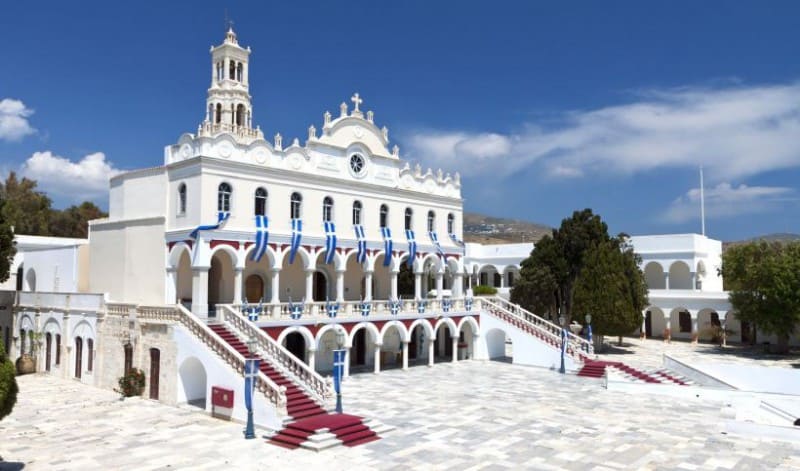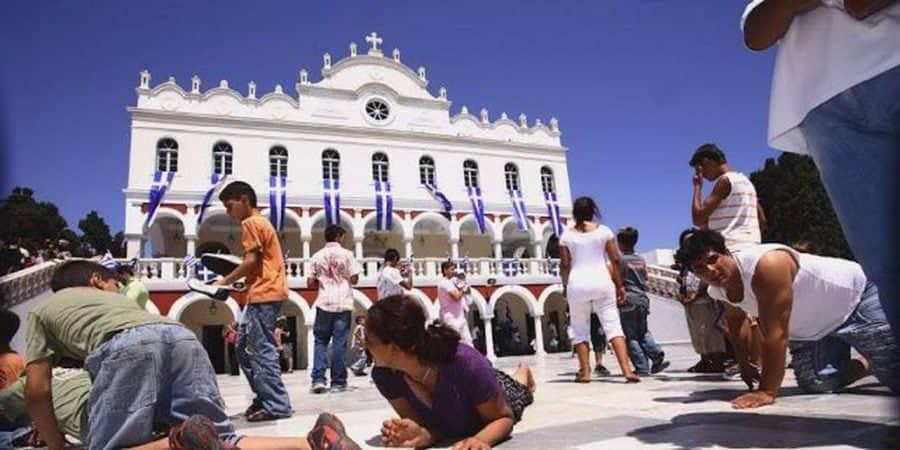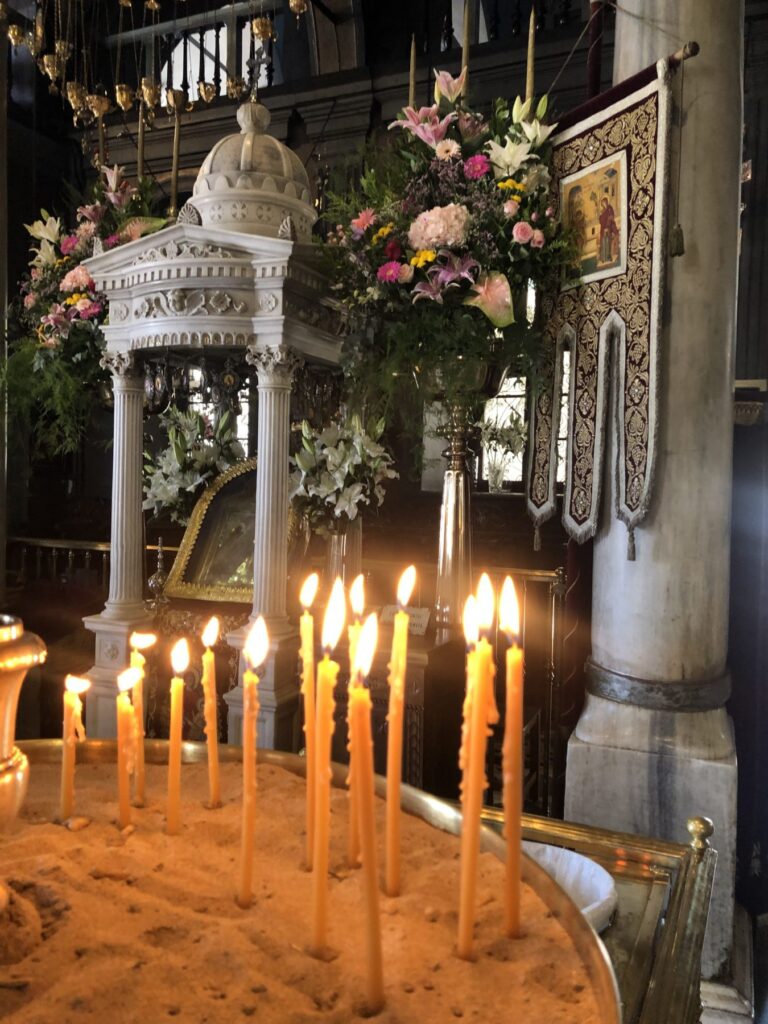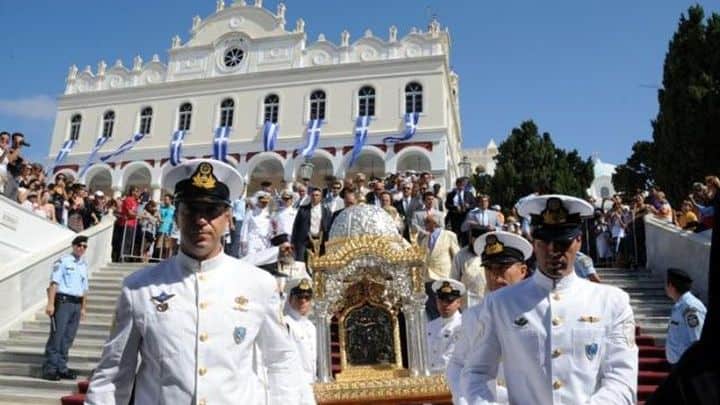
Panagia of Tinos, also known as the Megalochari of Tinos (Great Grace) or Evangelistria of Tinos (Our Lady of Good Tidings), is the national patron saint and protector of Greece.
The name ‘Megalochari’ means “with all graces” and is one of the names given to describe Virgin Mary. The church is dedicated to the Annunciation of the Virgin Mary and is also the most popular pilgrimage in Greece.
The church of Panagia Megalochari is located on a hill above Chora, the capital of Tinos, and is globally known as a sacred place of spiritual pilgrimage and divine worship.

Many pilgrims crawl from the port to the church, to show their devotion and pray for compassion, good health and healing. As the path is rough and their knees can get injured, a long red carpet has been laid from the entrance of the church to the port, only for this reason.
According to the tradition, the church was built following the dream of a local nun from the Monastery of Kechrovouni in Tinos who later became a saint, Pelagia.
The nun used to have frequent dreams of Panagia telling her to find her home and showing a particular place. When the nun dug in that place, on January 30th, 1823, she found an icon depicting Virgin Mary praying. This icon was considered miraculous and today it is placed inside the church.

The icon portrays the Virgin Mary kneeling and Her head bent in prayer, pronouncing words written in an open book. Opposite to the Virgin stands the Archangel Gabriel holding in his left hand a lily, the symbolic flower of purity, while the Holy Spirit in the form of a dove descends from heaven.
The Holy Icon is covered with gold and precious stones placed by those who believe in Panagia, as an expression of faith and gratefulness to Her.
When the icon was found in 1823, the Greek Revolution against the Turks had just started and this was considered a good sign. Many Greek leaders came to Tinos to pray to the icon, such as Karaiskakis, Kolokotronis, and Markygiannis.
![]()
The Church of Panagia Megalochari in Tinos is also a monastery complex. It was originally built on the site of an early-Byzantine church dedicated to Saint John, which was built on the site of an ancient temple of Dionysus, as excavations have shown. On the ground floor, there is the Chapel of the Apocalypse. This chapel started to be built in 1823, when the holy icon was found. On top of the small chapel, the whole monastery was built.
Services are performed at the church every day. Thousands of pilgrims from all over Greece and from abroad visit the Church of Evangelistria in Tinos to participate in the Feast of the Assumption celebrated in Byzantine splendour.
Normally, masses of people are crowded in front of the Church, while inside the Church the gentle candlelight, the hymns of praises to God, and the scent of the burning incense and myrrh create a mystic atmosphere of devout concentration.

Every year during the celebration, the Holy Icon is carried with great honours and special services around the decorated streets of the town of Tinos. When the Icon returns to the Church, a prayer is chanted in memory of the builders and all those who offered themselves to the construction of the Church.
Later in the evening, children led by the orchestra of the Church fill the streets of Hora holding lighted lanterns and singing hymns to praise the finding of the Holy Icon.
Due to the coronavirus pandemic, today will be celebrated differently.
